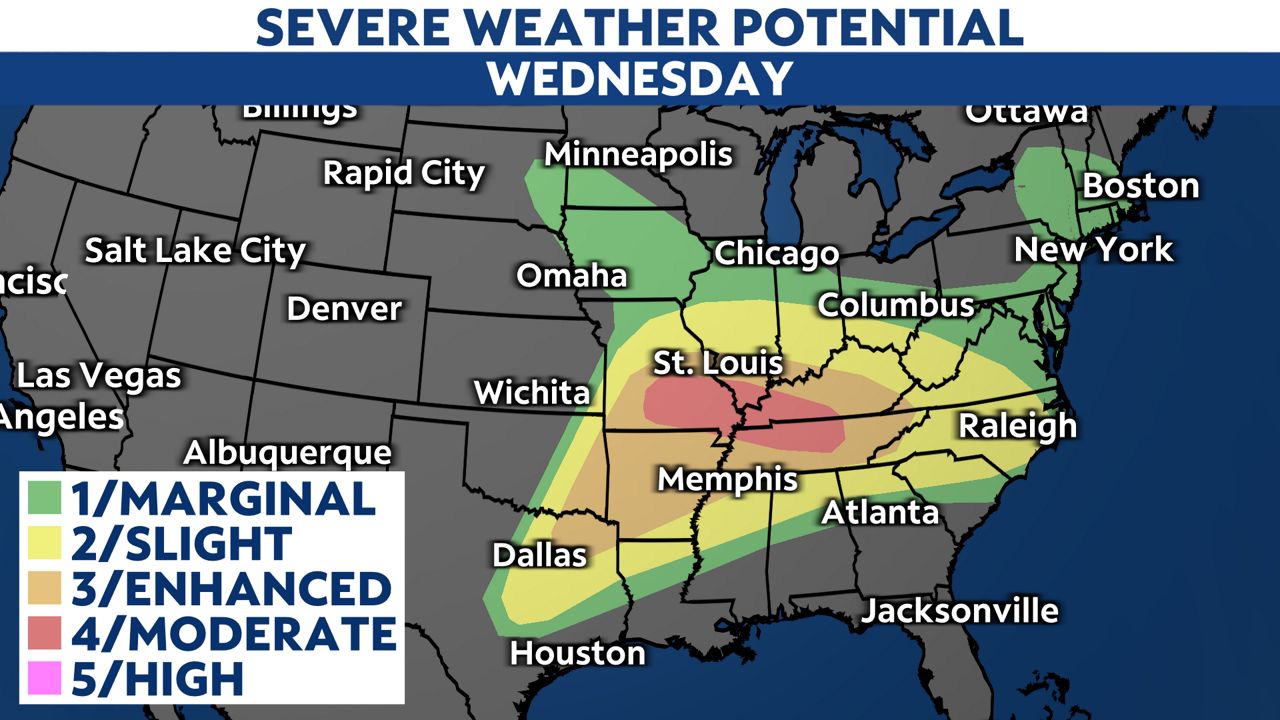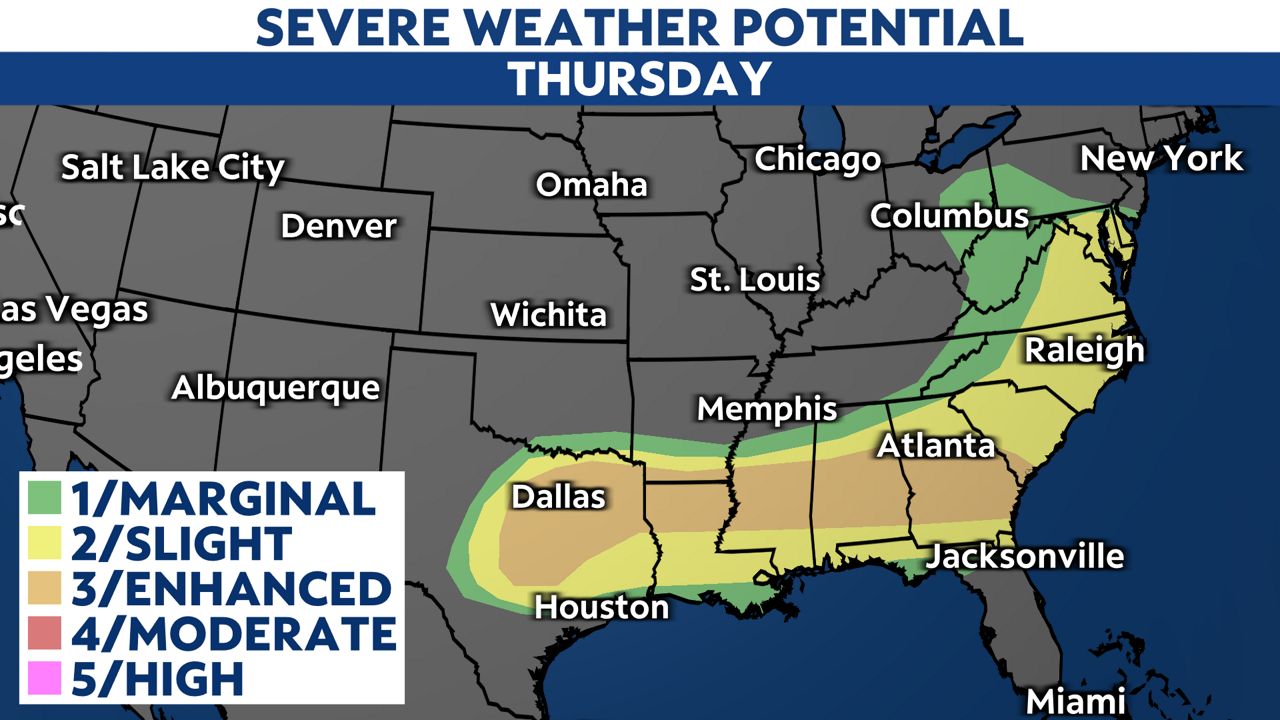The threat for severe weather continues this week. Storms will be capable of producing strong tornadoes, damaging wind gusts and large hail on Wednesday and Thursday.
What You Need To Know
- The month of May sees a high number of tornadoes on average
- Severe storms are expected across the Mid-Mississippi River Valley on Wednesday
- The severe threat pushes south to Texas, across the Gulf Coast and Mid-Atlantic on Thursday
A low pressure system moving across the country will push a cold front south, producing strong to severe storms across a large portion of the country in its path.
On Wednesday, the highest threat is over parts of the Mid-Mississippi River Valley, with a moderate risk (level 4/5) stretch from southeast Missouri to western Kentucky.

Severe storms are expected in this area beginning Wednesday afternoon through Wednesday night, with severe wind gusts and extremely large hail as the primary threats. A few strong tornadoes are also possible.
Flood Watches are also in effect, with locally heavy rainfall totals up to 2 to 4 inches possible. Heavy rain could cause flooding in parts of Missouri, Illinois, Kentucky, Tennessee, Ohio, West Virginia and Virginia.
The cold front attached to this system pushes south on Thursday, bringing the severe weather threat with it. The highest threat tomorrow will be across the Deep South, stretching from Texas to the Atlantic coast, where an enhanced risk (level 3/5) is issued for all types of severe weather.

A slight risk (level 2/5) also stretches east across the Gulf Coast, up through the Carolinas into the Mid-Atlantic. Scattered severe storms will be possible in those areas through Thursday afternoon into Thursday night as the cold front pushes south.
Behind the front, cooler air and below normal temperatures settle in by Friday into this weekend.
Make sure you have a plan for if you are at work or home. Even if you could be driving.
Here are five ways to prepare in case the sirens go off.
Have a way to stay updated on weather information, including a NOAA Weather Radio and making sure notifications are turned on for your weather and news apps.
Our team of meteorologists dives deep into the science of weather and breaks down timely weather data and information. To view more weather and climate stories, check out our weather blogs section.



